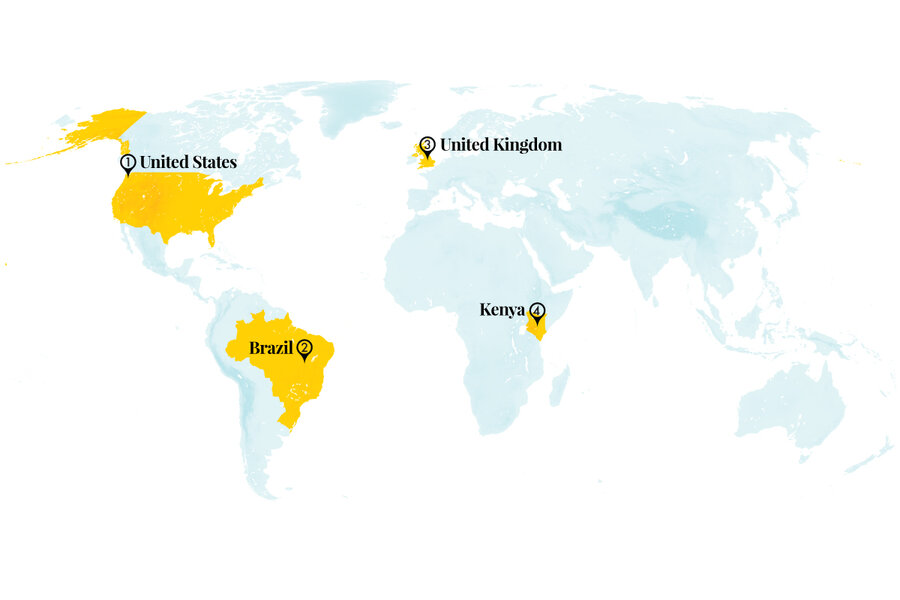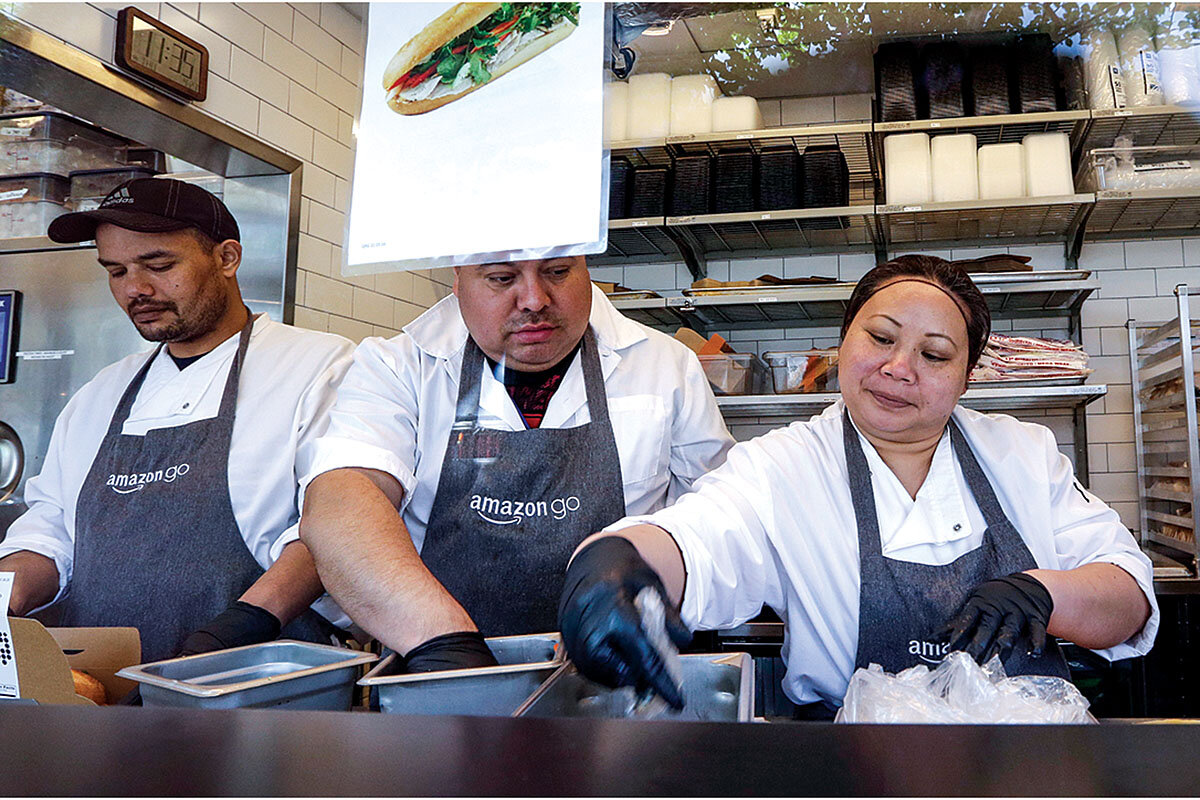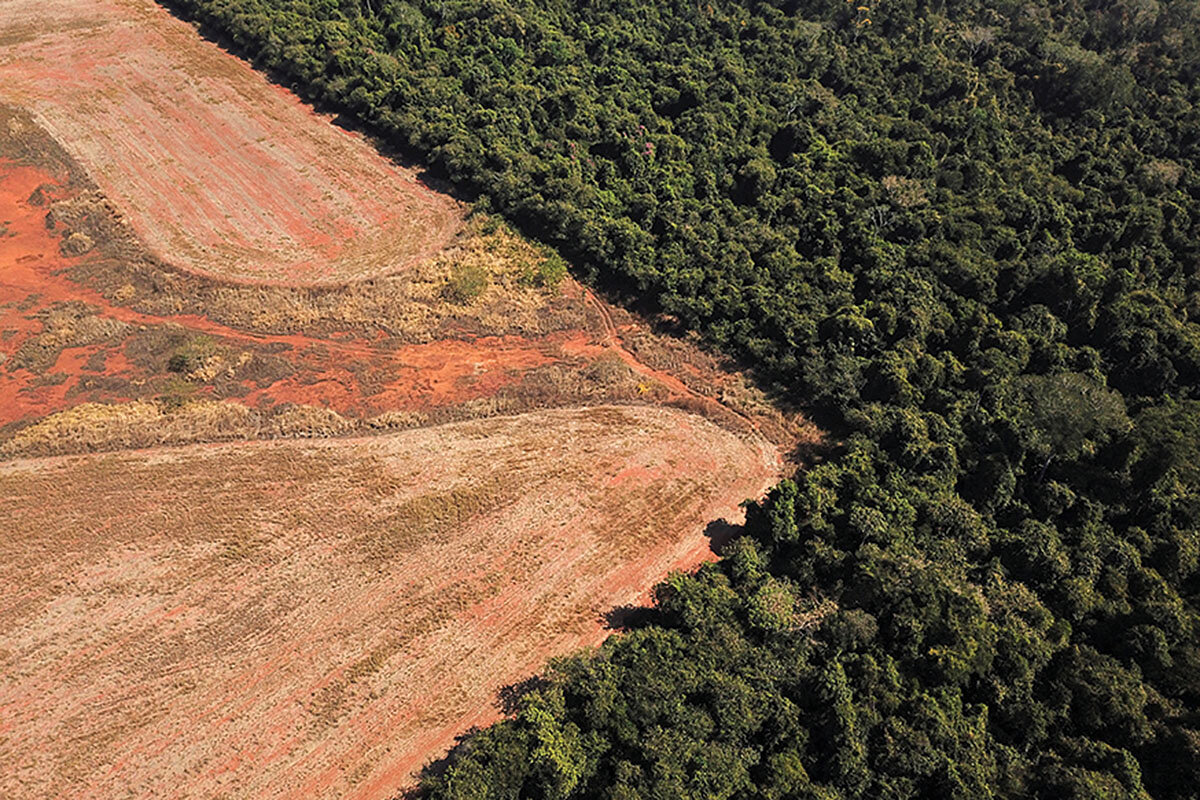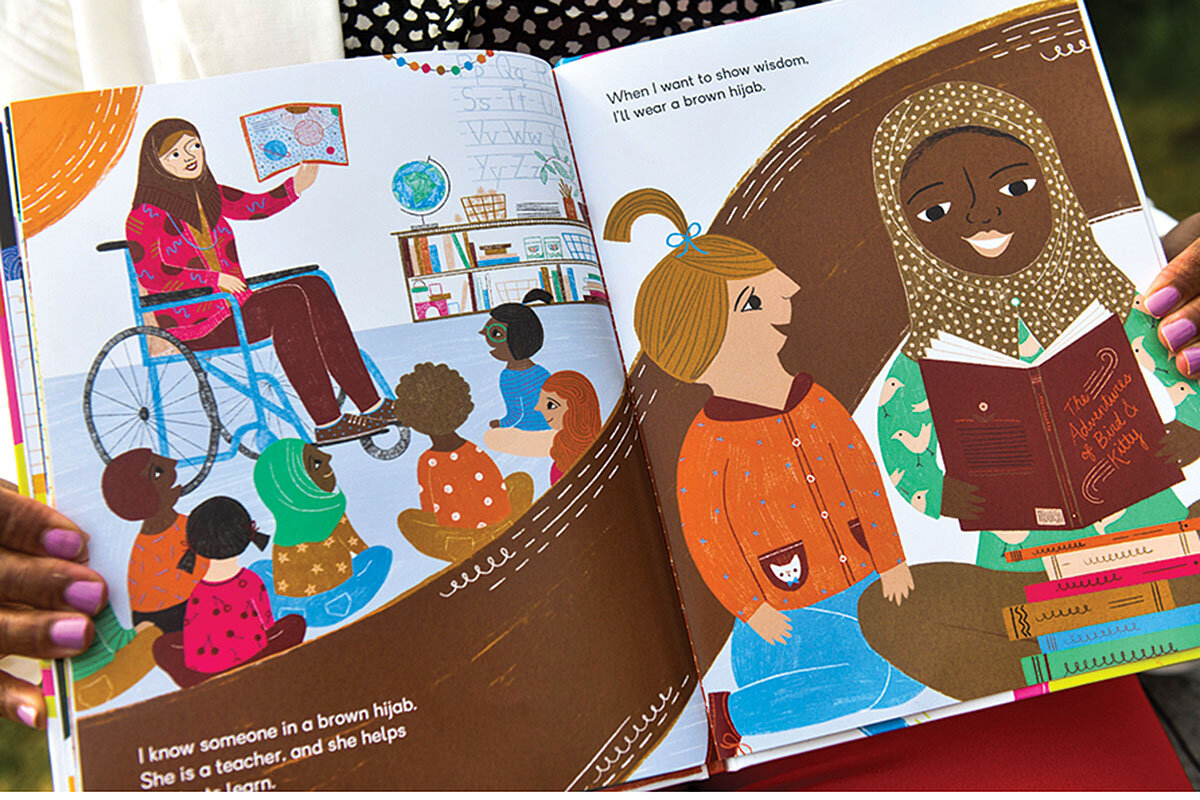Workers’ well-being: Workweek laws and co-ops boost fairness
Loading...
In our briefs this week, along with worker rights we look at the development at Purdue University of a superwhite paint that may someday help reduce the need for air conditioning.
1. United States
So-called fair workweek laws are bringing economic stability to shift workers in Seattle and beyond, a new study suggests. Women, Hispanic people, and Black people are disproportionately represented in the retail and food service industries, where unpredictable shifts and low wages can make it difficult to pay bills on time, manage caregiving responsibilities, and find stable housing. To address these challenges, several major cities from San Francisco to New York – and the state of Oregon – have enacted laws requiring managers to either post final schedules in advance or compensate workers for scheduling changes.
Why We Wrote This
Our progress roundup shows how workers’ quality of life and productivity are enhanced when they have more control – whether over schedules or opportunities to collaborate.
A recent study of Seattle’s 2017 Secure Scheduling Ordinance found that workers who knew their schedule two weeks in advance reported experiencing better sleep, and feeling healthier and more financially secure than before the switch. Despite compliance issues, researchers are encouraged by the positive outcomes. “It would be kind of a game changer if we saw these kinds of effects that we’re detecting in Seattle across the country,” said Alix Gould-Werth, director of family economic security policy at the Washington Center for Equitable Growth, which helped fund the research.
The 19th, Proceedings of the National Academy of Sciences
2. Brazil
The success of a farming cooperative in Brazil’s Cerrado ecoregion is providing a framework for rural communities and the natural biome to thrive. The Cerrado, a tropical savanna twice the size of Venezuela, has lost nearly half its native plant life to large-scale agribusiness, threatening the ecosystem’s stability and allowing worker exploitation. One of the first projects of CoopCerrado, an organic farmers’ cooperative, was to tackle the overharvesting of faveira beans. When farmers negotiated together, they were able to establish more sustainable harvesting practices and those at the bottom of the supply chain saw their pay jump from 4 cents to 50 cents per plant.
Today, CoopCerrado represents 5,000 farming families and is applying similar strategies to 170 other native species. The group won a 2021 Equator Prize following two decades of work to commercialize regenerative agriculture and support traditional communities. “The cooperative stood out as an effective model for the sustainable use of a vulnerable biome,” said Anna Medri, a senior analyst at the United Nations Development Program. “It provides a blueprint for sustainable supply chains that leave ecosystems intact.”
Mongabay
3. United Kingdom
The proportion of minority ethnic characters in U.K. children’s literature has nearly quadrupled in recent years. In 2017, only 4% of children’s books had characters of color, reports the Centre for Literacy in Primary Education, while nonwhite British people accounted for 13.8% of the population at the time. The CLPE’s fourth annual Reflecting Realities report, which analyzes picture books, fiction, and nonfiction geared toward ages 3-11, found that representation jumped to 15% in the 2020 publishing year.
The group attributes most of that leap to gains in picture book diversity – 48% of picture books published in 2020 featured nonwhite characters. Representation in nonfiction tripled to 34%, but fiction was static at 7% from 2019 to 2020.
CLPE studied how main characters, and not just sidekicks, are important. Ninety percent of characters of color featured in main casts “influenced the narrative in their expression of thought, voice or action,” suggesting that they are being given agency and voice. The report noted that although 8% of new books had a main character of color, 33.9% of English primary school children are nonwhite. While noting the discrepancy, experts find recent gains encouraging. “We know how long it takes to turn things around in the book industry,” said report author Farrah Serroukh. “It’s a pleasant surprise.”
CLPE, The Guardian
4. Kenya
Solar-powered water pumps are helping Kenyan communities survive dry spells. According to United Nations Water, nearly a third of the global population lives in countries facing water scarcity, either because of a lack of water or because of limited access due to poor infrastructure. In Kenya, for example, nearly all farming relies on rain. In areas where rivers don’t flow outside the two rainy seasons, farmers have long built sand dams to capture water for later use. However, retrieving that water is time-consuming and sometimes unsafe.
The World Bank is spending $150 million to set up more than a dozen off-grid solar projects in Kenya, including water pumps and irrigation systems. Raphael Mauyu once worried that he was going to age out of labor-intensive dairy farming, but the solar pump in his southeast Kenyan village can pull enough water in a day to irrigate over 50 acres of land. That’s more than needed to tend to village livestock, Mr. Mauyu says. Other villages are buying their own solar pumps to move water from dams to farms. More than 20 farmers in the village of Kalawa say the switch has protected their livelihoods. “I feel like I am giving life to dying land,” said farmer Kaloki Mutwot. “Solar energy has really helped us to take rainwater harvesting to another level.”
Thomson Reuters Foundation, U.N. Water, World Economic Forum
World
A new superwhite paint developed by Purdue University scientists could help keep buildings cool and combat climate change. Unlike other white paints on the market, which use titanium dioxide to reflect up to 88% of rays, the Purdue formula uses a high concentration of barium sulfate to reflect 98.1% of sunlight. Although cooler than darker colors, commercial white paints still absorb a significant amount of sunlight, making painted surfaces warmer than the ambient temperature.
The lab’s findings were recently published in the journal ACS Applied Materials & Interfaces. During demonstrations on a 73 degree day, the ultrawhite paint swatch came in at nearly 15 degrees cooler than a swatch of the brightest commercially available paint, and 2 degrees cooler than the surrounding air. There could be challenges with scaling up production commercially, including the need to increase barite mining, but researchers believe the ultrawhite paint could someday reduce the use of air conditioning by up to 70% in hot cities. “It’s hopeful,” says Elizabeth Thompson, a vice president with the U.S. Green Building Council. “This is the kind of thing that we all hope scientists and researchers will help us to discover, opportunities that we didn’t know existed for how to live more sustainably.”
PBS, World Economic Forum, Smithsonian Magazine









